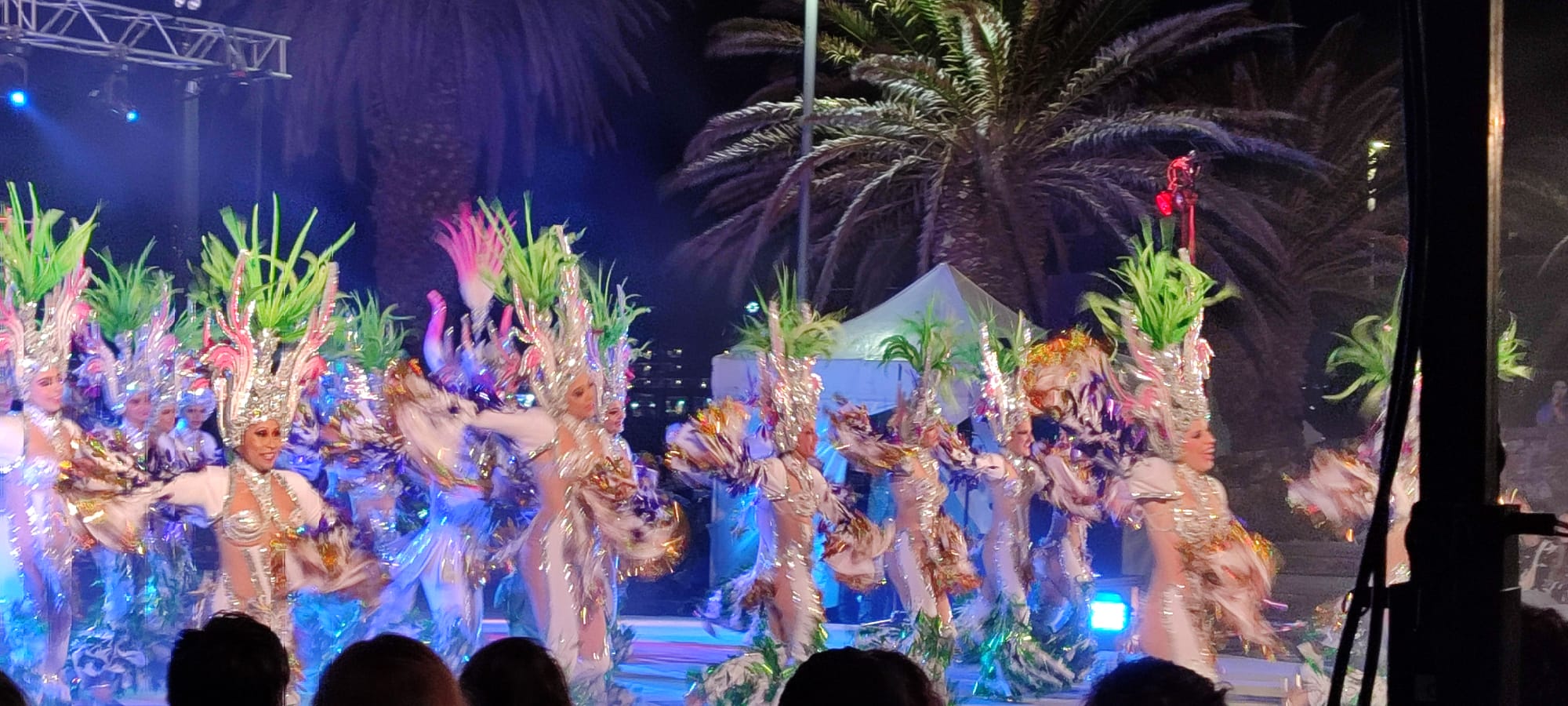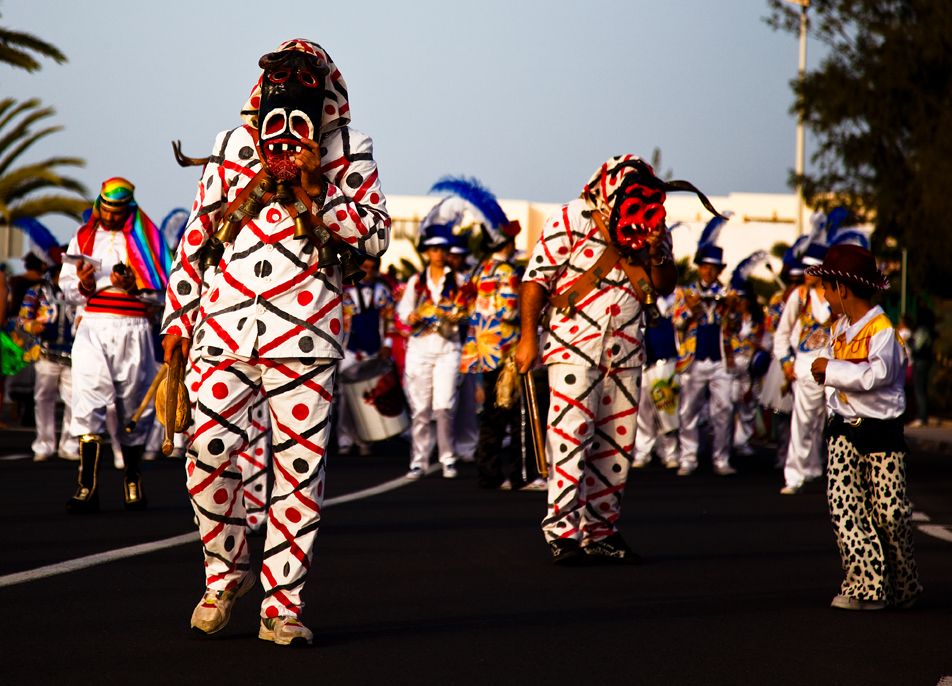
Carnival time in Lanzarote
You may think that this post is somewhat late – surely carnivals take place in February around the time of Pancake Tuesday and Mardi Gras, don’t they ? Well, yes and no.
Carnival celebrations are huge in the Canary Islands, and Lanzarote very much adheres to this rule. Carnival is not programmed on fixed dates, but this year carnaval season began on 1st February, with festivities, concerts and events in the capital city of Arrecife….and will conclude a whole 6 weeks later (yes, 6 weeks.!!) on 10th March, ending with a week of parades and activities in the neighbouring island of La Graciosa, just north of Lanzarote.

Parades, concerts,music and pageants
The local streets are buzzing with activity at this time of year, and residents and tourists alike join in the noisy celebrations. There are elaborate costumes, floats and live music, ranging from the more traditional Canarian music to the latest hits. For many of the locals carnaval is a bigger event than Christmas and many bystanders will be dressed in costumes simply to watch the culmination of events as the carnival procession passes by.
But there is more to all this than just music and dancing. Some carnival traditions are intertwined with social history in Lanzarote.
A bit of history from local towns
Arrecife

In Arrecife, from the beginning of the 19th century, the bucheros, masked and dressed in old-fashioned peasant clothing, and masked, would playfully threaten the passersby with their “weapons”, (buches) which were fashioned from the inflated bladders of large fish……hmm, maybe not the most attractive thought. In the past, the bucheros would refuse to work on the ships in Arrecife during carnival season and were fed by the locals who would welcome them into their houses.
Despite opposition from the Church and the prohibition of the bucheros dating from the Spanish Civil War in the 1930s until the 1960s, the bucheros are still “attacking” the carnival goers today…. albeit in a revamped costume seen above in the photo (and no longer using authentic fish bladders, you may be relieved to learn.)
Teguise

The use of devil images is widespread througout carnivals globally, and is often a mischevious figure attempting to cause mayhem. The diabletes (little devils) of Teguise are no exception, chasing and frightening the younger inhabitants.
Their distinctive costumes with their red and green diamonds, and their colourful masks, denote both their impish nature and also symbolise fertility/virility.
Carnaval in Lanzarote offers not only a great opportunity to enjoy the vibrant celebrations, but also a unique insight into the rich cultural heritage of this spectacular island.
